Are you in search of a discussion strategy that can save you from the creaking silence of a class full of non-talkers?
Enter hexagonal thinking. While this strategy is also wonderful in the physical classroom, it’s a great digital option for unlocking discussion in this very moment. Below you’ll find background on the topic and then some strategies for how you might implement hexagonal thinking in the classroom.
What is hexagonal thinking?
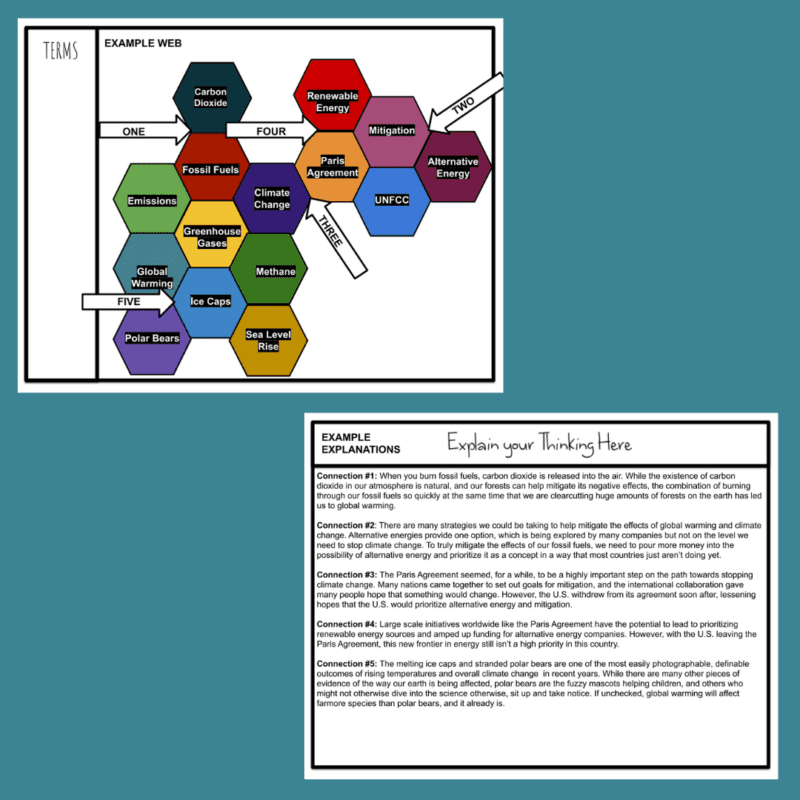
Hexagonal thinking is a classroom strategy borrowed from the business world. Concepts are placed on hexagons, and then moved around to build a web of connected ideas. The most interesting part comes in the debate about where to connect what, and why. In the classroom, students can build hexagonal webs in groups or alone, online or off. No two webs will ever look the same, and neither will the explanations of the connections students have made, whether given in writing or aloud.
[contextly_auto_sidebar]
How you might structure hexagonal thinking in the classroom.

- Begin by choosing key ideas from a reading or unit and adding them to your hexagons. From there, branch out into related concepts from other disciplines, the news, or modern culture. Now you have an idea deck.
- To create your hexagons, you can use this free online generator or pick up a free digital toolkit with tons of templates and examples here.
- Share your deck with students in groups. You can hand them a set of printed cards or direct them to their own copies of your digital deck on Google Slides.
- Ask them to connect the concepts by lining up the sides of different hexagons with related ideas. Each card can connect to up to six others, but might only connect to one. They want to make the strongest connections they can. This will lead to a lot of debate. Remind them that there’s no right answer for how to connect the cards, and that they should push themselves to provide evidence for the strength of their ideas as they argue productively (and kindly) within their group.
- Finally, students will have a web of strong connections laid out. Have them write about several of their most interesting intersection points—why they’ve connected several hexagons in this way. At this point they can share their thinking back to the class. In the physical classroom, students can present aloud and gallery walk to see each other’s work. Online, you can have students save their webs and drop them into a collaborative gallery on Google Slides, report back on Zoom, and/or record a video about their web on Screencastify or Flipgrid.
Examples of hexagonal thinking in the classroom
Now let’s take a peek at some of the wonderful ways hexagonal thinking is taking place around the world. Sit back, relax, and enjoy.
1. As a wrap-up activity for an identity unit

7th grade students of Genevieve Chavez, Spain
2. Connecting “The Lottery” and “The Ones who Walk Away from Omelas”
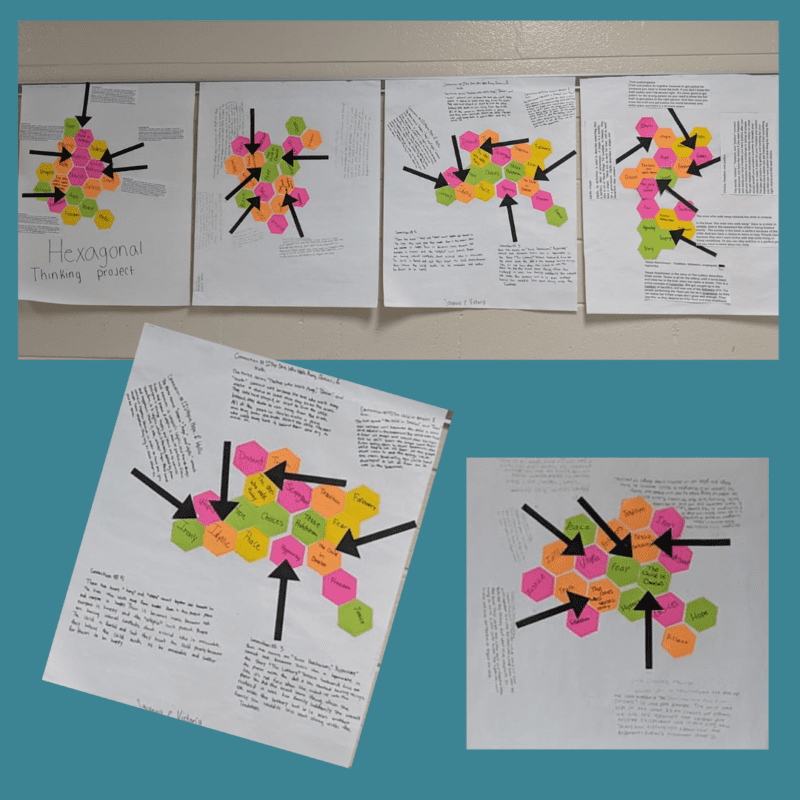
Students of Ruth Anne Flowers, Airport High School, South Carolina
3. A conversation about The House on Mango Street
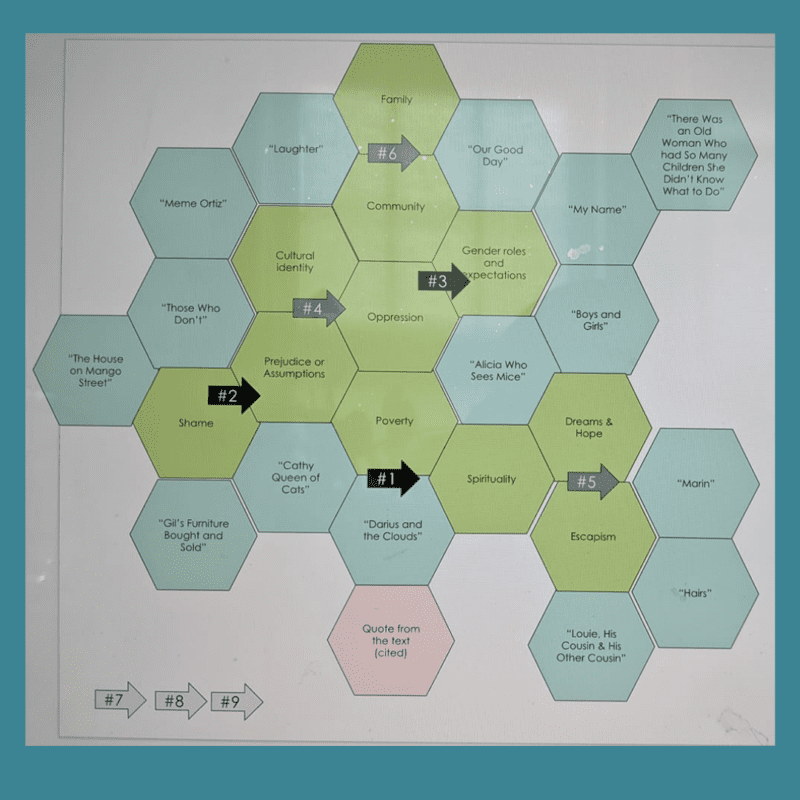
Students of Tabatha Rose, Strath Haven High School, Pennsylvania
4. Connecting poetry
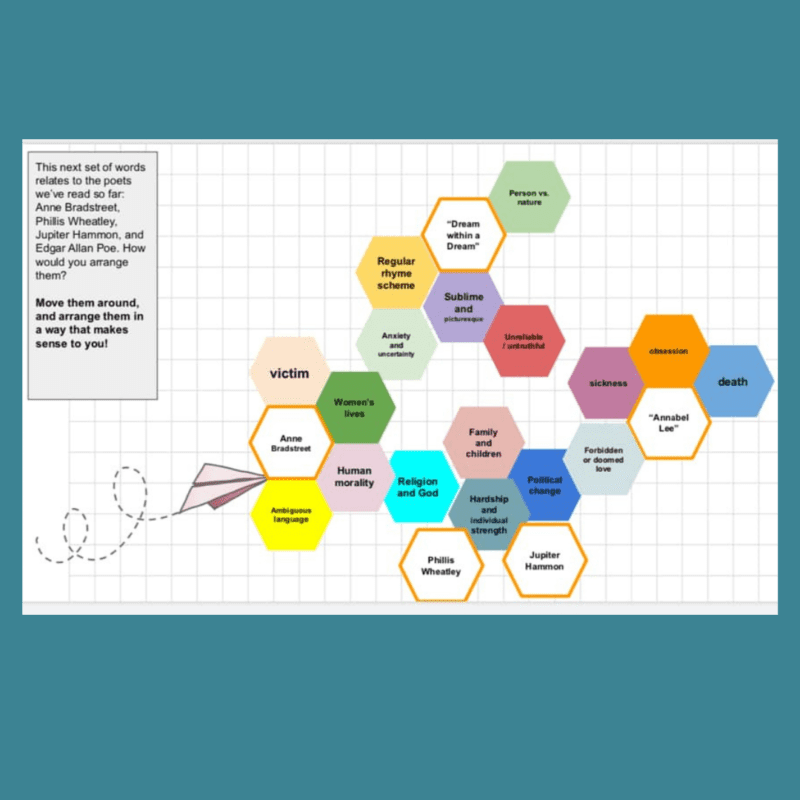
Students of Megan Elizabeth
5. Discussing The Great Gatsby

Students of Sharon Ma, Shanghai SMIC Private School, China
6. Vocabulary thinking maps
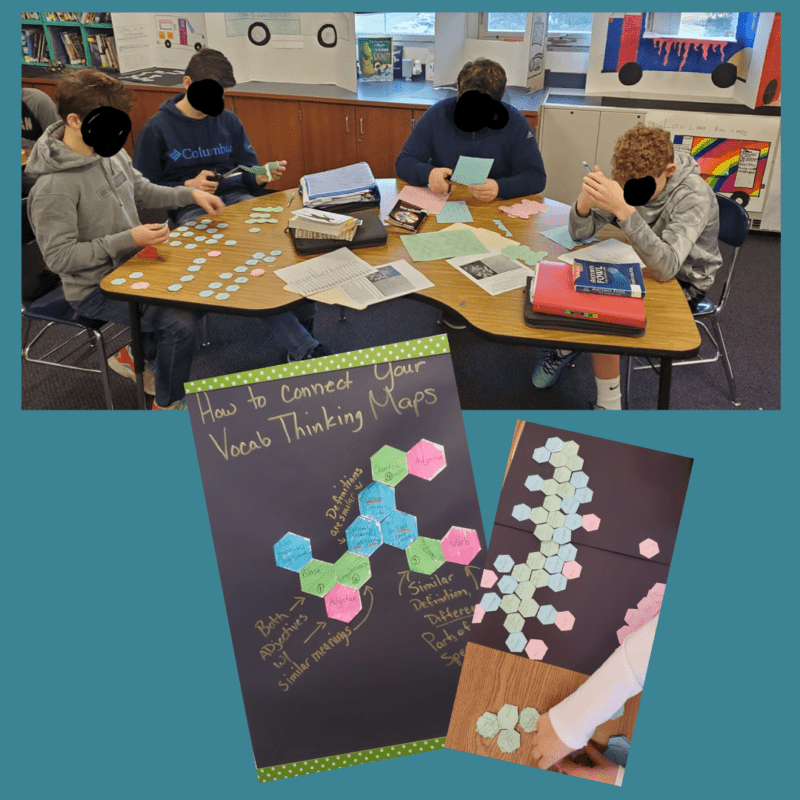
Students of April Egal, Burgettstown Middle High School, Pennsylvania
7. Brainstorming for a TED Talk

Students of Rachel Barbe
8. Diving deep into Born a Crime
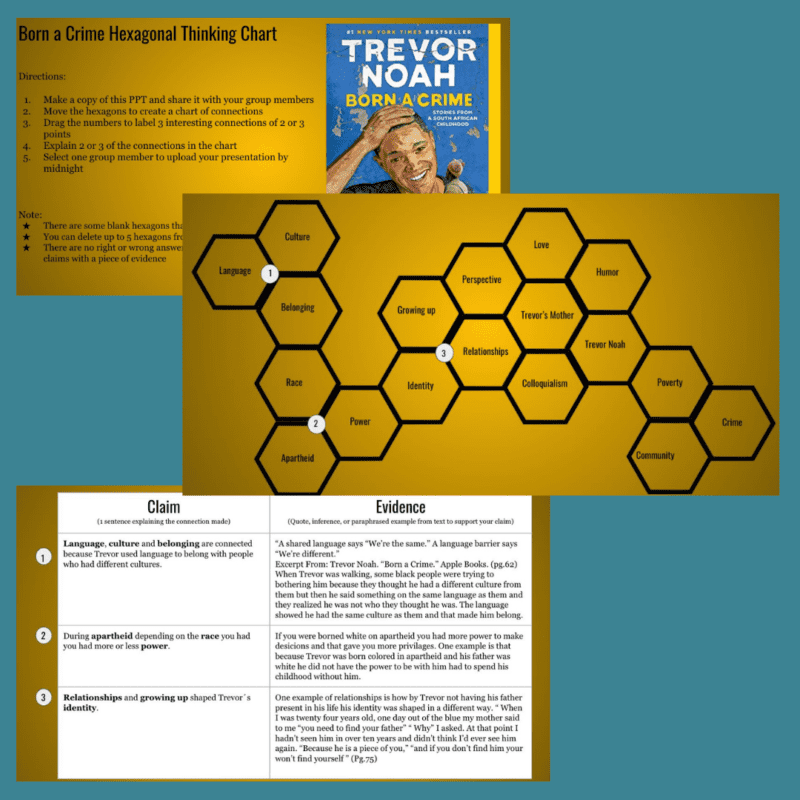
Students of Cheri Hayden, Colegio Americano, Ecuador
9. Summative assessment for The Kite Runner
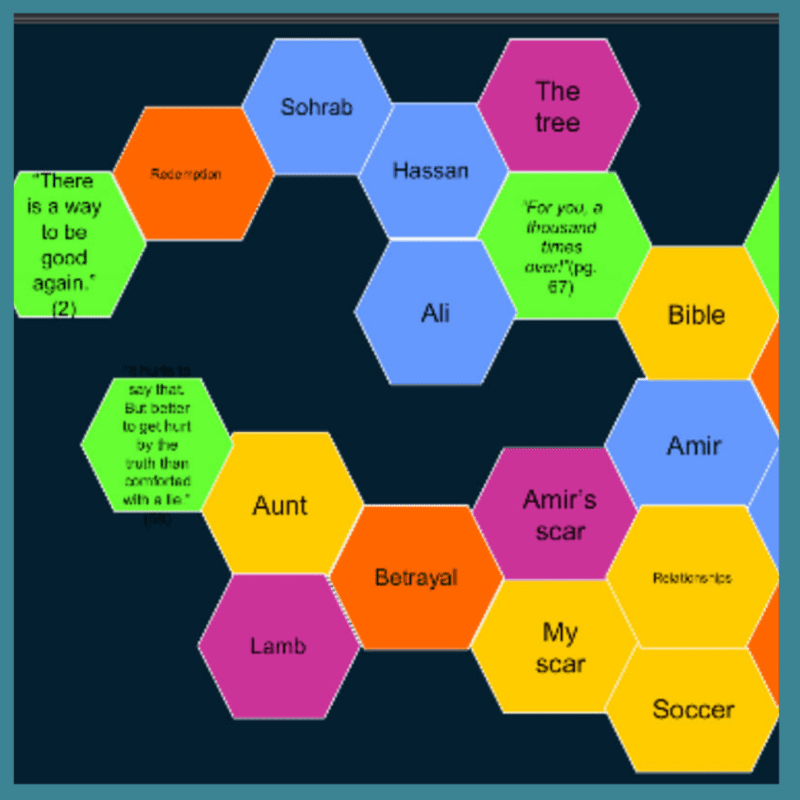
Students of Caitlyn Farrow, Central Hardin High School
10. In conversation about The Crucible
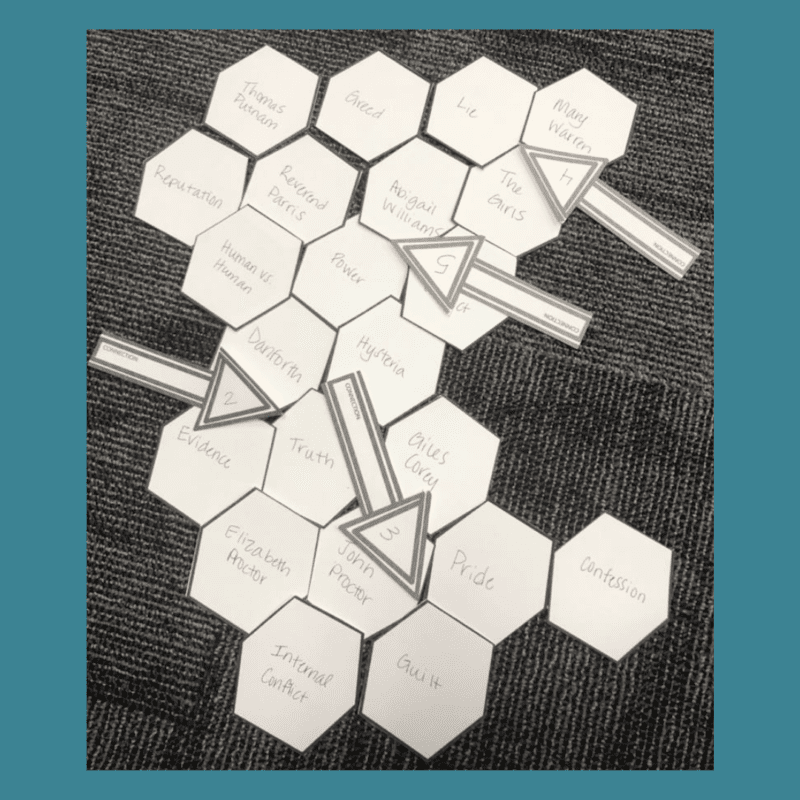
Students of Jenna Jewell
11. Themes in Yaa Gyasi’s Homegoing

Students of Taylor Sullivan, Boston Prep, Massachusetts
12. Hexagonal one-pagers for A Long Way Down and The Outsiders
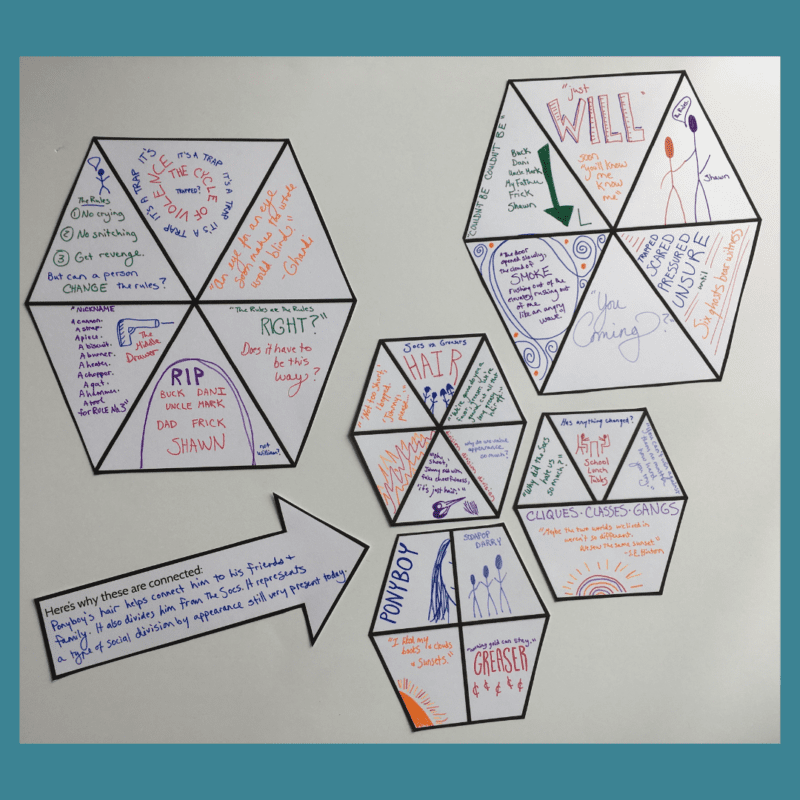
Example created by Betsy Potash
13. Connecting characters and terms for Pride and Prejudice
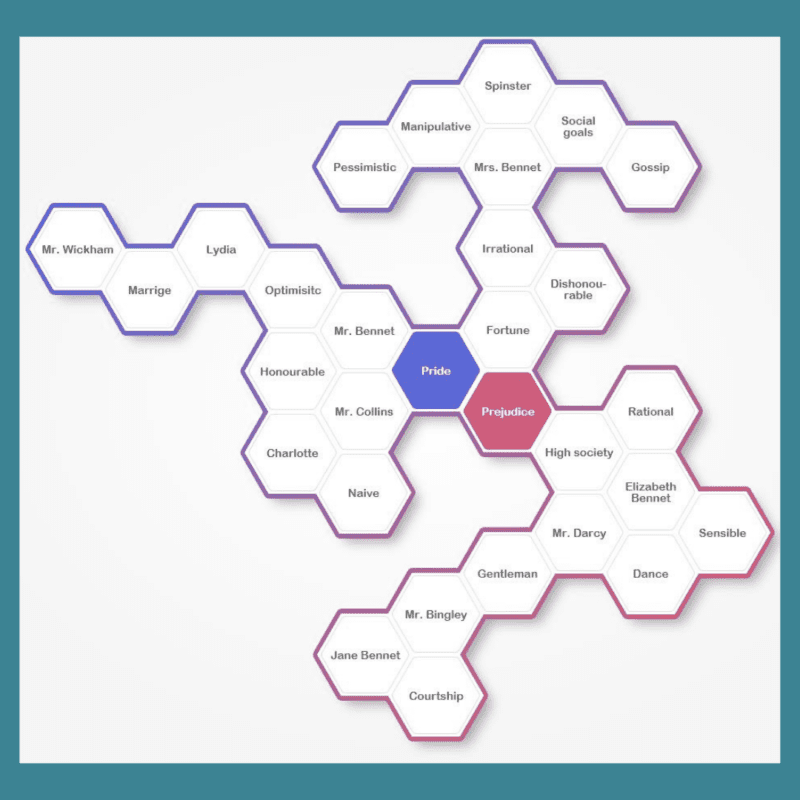
Students of Jo LittleHorn, Velika Gorica Grammar School, Croatia
Have you used hexagonal thinking? We’d love to hear about your experiences in the comments. For more teaching tips and strategies, be sure to subscribe to our newsletters.
Plus, how to use one-pagers in the classroom.


